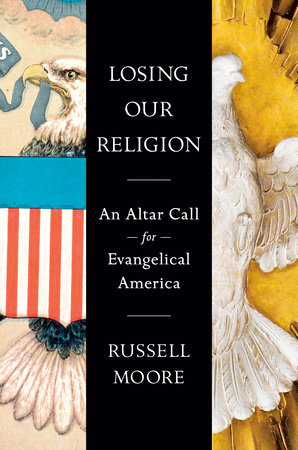Jesus was dead, and I mean really dead, on a cross, but he’s not anymore.
That’s how my son Timothy, a few years ago when he was three, explained to neighbors why he was so excited about Easter. No one referred me to a therapist, or to a cognitive development seminar. Those around me didn’t see the horror of what I was doing to my children. Neither did I.
We didn’t know that the Gospel, like Ginsu knives and blood pressure medicine, ought to be kept out of the reach of small children.
At least that’s what one church was told recently, by a publisher of children’s Sunday school curricula, according to Two Institutions, a blog about family and church matters.
The pastors at this church in Raleigh, North Carolina, were perplexed when they saw the Holy Week Sunday school lessons for preschoolers from “First Look,” the publisher of the one to five year-old Sunday school class materials. There wasn’t a mention of the resurrection of Jesus. Naturally, the pastors inquired about the oversight. It turns out it was no oversight.
The letter sent from the publishing company is up on the Two Institutions blog website. I had to read it three times to make sure I wasn’t falling for a Lark News parody. It turns out this publisher has decided that the Gospel is too scary for preschoolers.
“Easter is a special time in churches,” the letter from the publisher says. “It’s a time of celebration and thankfulness. But because of the graphic nature of the Easter story and the crucifixion specifically, we need to be careful as we choose what we tell preschoolers about Easter.”
The letter continues:
“In order to be sensitive to the physical, intellectual, and emotional development of preschoolers, First Look has chosen not to include the Easter story in our curriculum. Instead, we are focusing on the Last Supper, when Jesus shared a meal and spent time with the people He loved. We have made this choice because the crucifixion is simply too violent for preschoolers. And if we were to skip the crucifixion and go straight to the resurrection, then preschoolers would be confused.”
The curriculum marketers must know how bad this sounds, so they reassure the church they believe that the Gospel is for all people. Leaving out the cross and the resurrection is actually to help children come to Christ. They write, “We’re using these formative preschool years to build a foundation for that eventual decision by focusing on God’s love and telling preschoolers that ‘Jesus wants to be my friend forever.'”
The publishers note that there is an “alternate ending” to the kindergarten lesson that “tells a simple version of the Easter story” for older preschoolers, for those churches that want it. What kind of evangelical world do we find ourselves in when the Easter story is an “alternate ending” to the story of Jesus, at Eastertime?
Jesus wants to my friend forever? Who is this Jesus? And where is He? Apparently, He’s a Christ without a cross, without an empty tomb. He spends time with His friends, and loves us. Does knowing this, apart from the Gospel, actually prepare preschoolers to see themselves as sinners in need of a Mediator before a Holy God?
No, a Jesus who is not crucified, buried, and resurrected, does not save, and doesn’t help ease the way to salvation. Jesus as moral teacher, inspirational rabbi, or “forever friend” apart from the Gospel only prepares one for old-fashioned Protestant liberalism, the notion that what matters is that I’m civilized, ethical, and enculturated as a Christian. That’s not Christianity.
At Pentecost, the apostle Peter delivered a Gospel proclamation that cut the heart of his hearers to the quick of repentance by preaching that the dead body of Jesus was no longer in the tomb, but had been raised by the power of the Spirit. Peter thundered: “Let all the house of Israel know for certain that God has made him both Lord and Christ, this Jesus whom you crucified” (Acts 2:36 ESV, emphasis mine). When the people cried out for direction as to how to be saved, Peter continued: “For the promise is for you and for your children and for all who are far off, everyone whom the Lord our God calls to himself” (Acts 2:39, emphasis mine).
The apostolic preaching included raising up children in the nurture and admonition of the Lord, a nurture and admonition that is nowhere in the Scripture abstracted from the Gospel. Indeed, the very idea of an ethical system, or a love of Jesus, that is not rooted and founded in Christ crucified and resurrected is something far different than the message of Christianity… no matter to whom, and for how long, it is given.
If this were just a Sunday school publisher, we could ignore it. If this were one isolated incident, it would not be worth mentioning. But it is not. The temptation that comes to all of us, in every era of the church, is to have Jesus, without seeing ourselves in the gore of his bloody cross and the glory of his empty grave. In the way that we speak of Him to our children, or to skeptics, or to seekers, we sometimes believe we’ll gain more of a hearing if we present Him as teacher but not as a former corpse. It is too disturbing, we think to ourselves, too weird.
Peter thought that way too. Not the bold preacher of Pentecost, mind you, but the Peter of just a short time before that, the Peter of Caesarea Philippi. Peter certainly knew Jesus as friend, and he had just confessed that He was Messiah and Son of the living God. But when Jesus began to teach that He must “suffer many things from the elders and chief priests and scribes and be killed, and on the third day be raised,” Peter was outraged (Matt 16:21).
Peter was no preschooler, but he was disturbed. Matthew tells us that he began to rebuke Jesus. His cognitive development was not yet to the point where he could understand such things. This will never happen, Peter said. He loved Jesus. He wanted to be with Jesus. He wanted to stand with Jesus. He just didn’t want the Jesus of the cross or the empty tomb. Jesus didn’t call this shallow theology. He didn’t call it inadequate teaching. He called it Satan (Matt 16:23).
Our children need to hear the Gospel. They need to see Jesus. That’s graphic, sure. It’s confusing, of course. And not just for kids. But it is the only message that saves. It’s the only message that prepares one for salvation. It is, as Paul says, that which is “of first importance,” the message he received from Jesus Himself (1 Cor 15:3-4).
The death, burial, and resurrection of Jesus is the Gospel. That’s the first word. If we cannot speak of that, we would be better off not speaking of Jesus at all, rather than presenting another Christ, one who meditates but does not mediate, who counsels but is not crucified, who is accessible but not triumphant over sin and death.
The apostle Paul told us the word of the cross would be folly to those who are perishing (1 Cor 1:18). He didn’t warn us that it would sometimes also be folly to those who are publishing. No matter. It is still the power of God
This Easter, preach the Gospel… to the senior citizens, to the middle-aged, to the young adults, to the teenagers, to the seekers, to the hardened unbelievers, to the whole world. And, yes, preach the Gospel to the preschoolers.
I’m not saying it won’t be scary. The Gospel will disturb the children. And, if you understand it, it will disturb you too.






